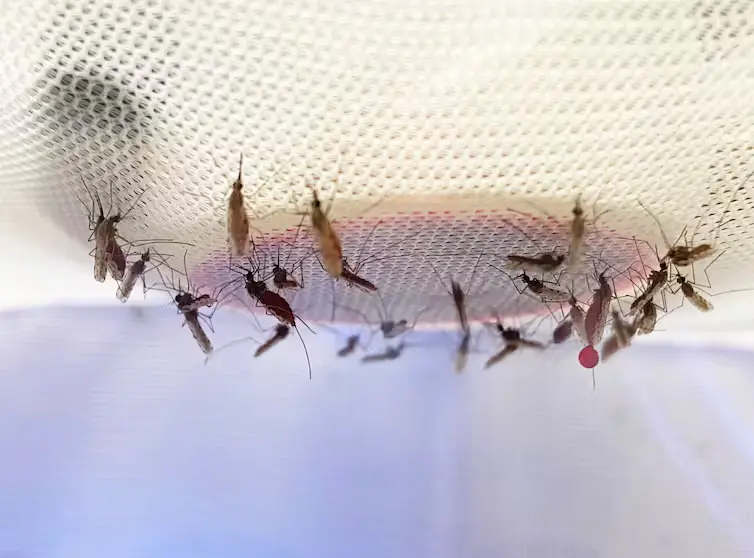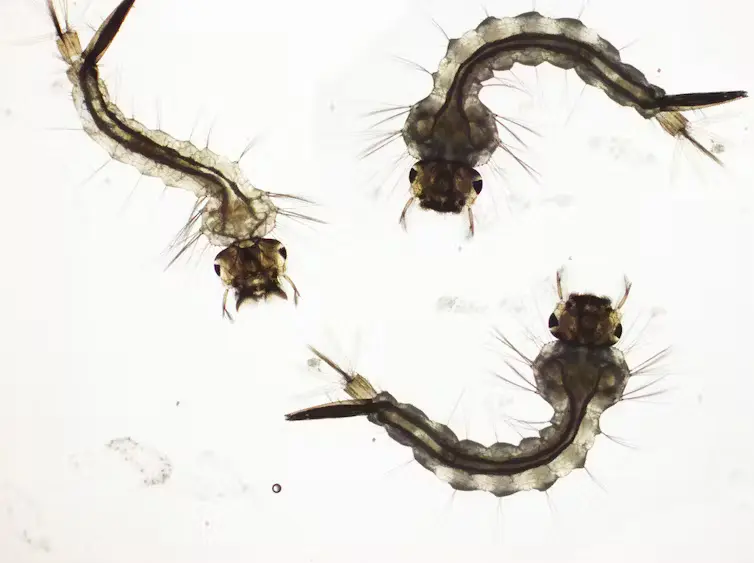Now that summer is in full swing, mosquitoes have come out across the United States. The use of mosquito repellents can protect both your health and sanity this summer.
While mosquitoes leave bothersome, itchy bites on your skin, they can also pose a serious and sometimes deadly risk to your health. When a mosquito bites you, it may transmit harmful pathogens that cause dangerous diseases like malaria, Dengue fever, Zika and West Nile.

Avoiding mosquito bites
Mosquito females bite people to get vital nutrients from our blood. They then use these nutrients to make their eggs. One single blood meal can give rise to about 100 mosquito eggs that hatch into wiggling larvae.

There are several ways to avoid getting bitten by mosquitoes, from wearing long, loose clothing and limiting time outside to placing screens over your windows and getting rid of standing water that mosquitoes might use to breed.
However, one of the best ways to protect yourself when you’re going to a place where hungry mosquitoes will be buzzing around is by using mosquito repellents.
Our team at the New Mexico State University Molecular Vector Physiology Laboratory has studied different types of mosquito repellents and their efficacy for over a decade. Here’s what you need to know to protect yourself this summer:
All about repellents
The use of mosquito repellents goes far back in history, certainly predating written historical accounts. Some of the oldest records of the use of mosquito repellents date back to early Egyptian and Roman history. During this period, smoke from smudge fires was often used to repel mosquitoes.
Today, we have more options than our ancestors when it comes to choosing what type of mosquito repellent to use – sprays and lotions, candles, coils and vaporizers, to name some.
These repellents interfere with a mosquito’s sense of smell, taste or both. The repellent either blocks or overstimulates these senses. Scientists understand how certain repellents like DEET work at the molecular level, but for many of them, it is still unknown why exactly they repel mosquitoes.
Testing repellents
We used a variety of scientific laboratory experiments and field tests to find out what works. For some products, testing was as simple as putting a volunteer’s treated arm into a cage with 25 mosquitoes and waiting for the first mosquito bite.

For others, like citronella candles, we used a slow-speed wind tunnel and put a candle or device between a person and a cage of mosquitoes. Depending on the repellent efficacy of the device, mosquitoes either flew toward the person or away. Another experiment we conducted was the Y-tube choice assay where mosquitoes chose to fly toward someone’s hand or, if repelled, fly toward the blank or empty option. https://www.youtube.com/embed/38gVZgE39K8?wmode=transparent&start=23 This video from the YouTube channel Veritasium shows our team performing a Y-tube choice assay experiment.
Mosquito repellents that don’t work
Bracelets don’t work. Department stores and pharmacy chains sell hundreds of different varieties of bracelets. They are marketed as “mosquito repellent” bands, wristbands and watches, and their materials can vary from plastic to leather. Even if they are loaded with repellents, they can’t protect your whole body from mosquito bites.
Ultrasonic repellent devices don’t work. These come as electrical plug-ins, free-standing varieties or watchlike accessories that claim to emit a high-frequency sound that deters mosquitoes by mimicking bats. However, in scientific studies, ultrasonic repellent devices fail to repel mosquitoes. In fact, when our lab tested one of these devices, we found a slight increase in mosquito attraction to the wearer.
Dietary supplements – vitamin B, garlic and so on – don’t work. No scientific evidence shows these supplements protect people from mosquito bites.
Light-based repellents don’t work. These devices come as colored light bulbs, and they don’t attract insects that fly toward white light. This approach works well on moths, beetles and stinkbugs, but not on mosquitoes.
Mosquito repellents that work
And here is our ranking of what does work, starting with the best repellent/active ingredient.
- DEET works. DEET, chemical name, N,N-diethyl-meta-toluamide, was developed in the 1950s by the U.S. Army and is a well-established mosquito repellent with a long history of use. The higher the percentage, the longer the protection time is – up to six hours.
- Picaridin works. This synthetic repellent can protect for up to six hours at a 20% concentration. This repellent is a promising alternative for DEET.
- Oil of lemon eucalyptus, or OLE, works. OLE, with the active ingredient PMD, is a plant-based alternative to DEET and picaridin. Its repellent properties can last for up to six hours.
- Other essential oils – some work, some not so much. We applied 20 different essential oils in a 10% essential oil lotion mixture to volunteers’ skin. Here’s what we found: Clove oil works. This oil, with the active ingredient eugenol, can protect from mosquito bites for over 90 minutes at a 10% concentration in lotion. Cinnamon oil works. This oil, with the active ingredients cinnamaldehyde and eugenol, can protect from mosquitoes for over 60 minutes at a 10% concentration in lotion. Geraniol and 2-PEP, or 2-phenylethyl propionate, work for about 60 minutes at a 10% concentration in lotion. Citronella oil works, just not so great. We found citronella oil at a 10% concentration only protected from mosquito bites for about 30 minutes.
If you are planning to mix your own plant-based mosquito repellent this summer, remember that essential oils are complex mixtures of plant-made chemicals that can cause skin irritations at high concentrations.
Based on our study, we recommend using repellents with the active ingredient DEET if you live in or are traveling to regions with a high risk of vector-borne disease transmission. However, plant-based repellents will work just fine to prevent nuisance mosquito bites in low-risk areas, as long as you reapply them as needed.
Immo A. Hansen, Associate Professor of Biology, New Mexico State University and Hailey A. Luker, Ph.D. Student in Biology, New Mexico State University
This article is republished from The Conversation under a Creative Commons license. Read the original article.


